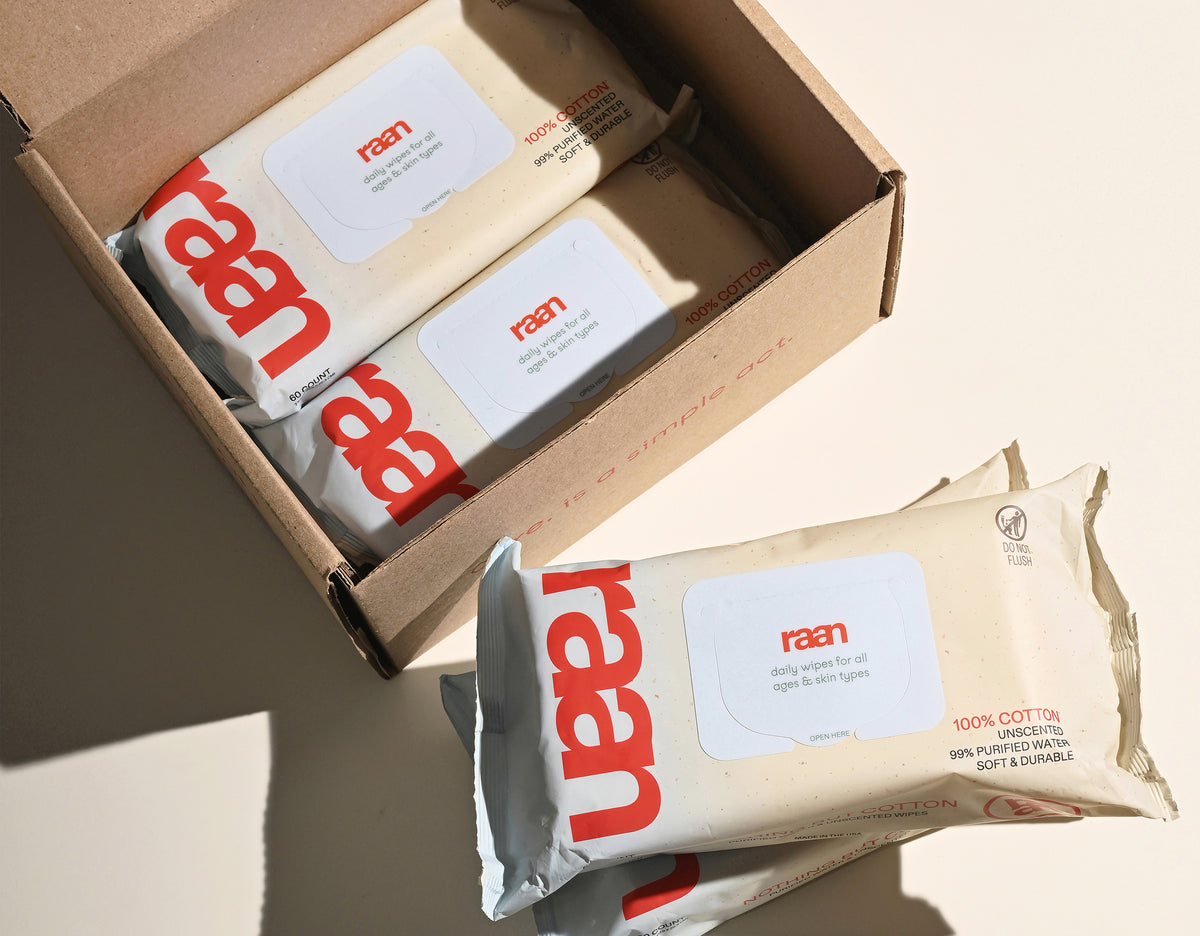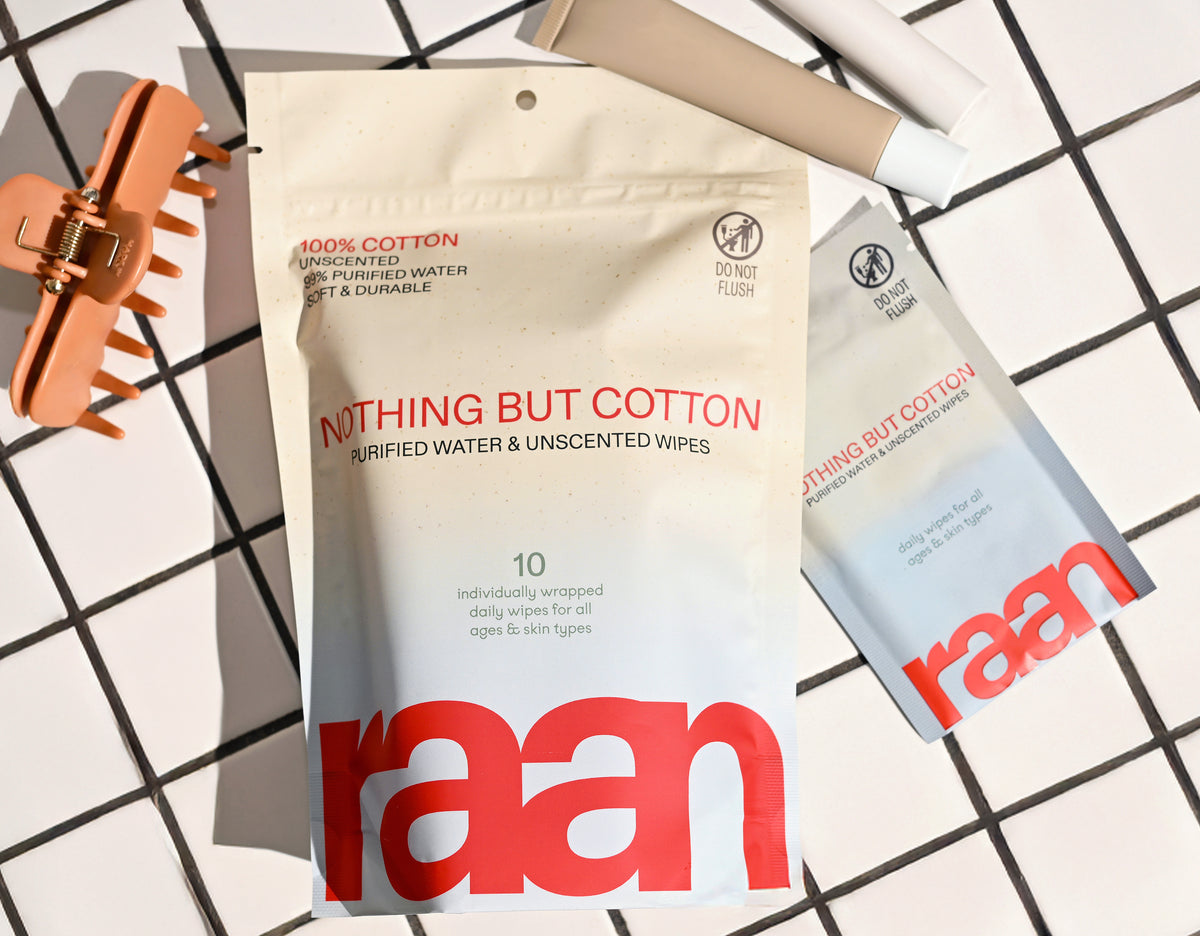Key Takeaways
- Choosing the best baby wipes is about their safety and effectiveness on your family's skin, not just packaging or marketing.
- Parents use baby wipes multiple times daily, making the quality and ingredients crucial.
- The US consumes over 2.6 billion baby wipes annually, highlighting their widespread use and importance.
- Many baby wipes contain hidden plastic fibers and synthetic preservatives that may be harmful.
- Labels claiming to be "natural" can be misleading, so careful selection is necessary.
Table of Contents
- What Makes a Baby Wipe "Best" Today?
- Core Ingredients Breakdown: What's Inside Baby Wipes (and Why It Matters)
- Material Science: Cotton versus Plastic in Modern Baby Wipes
- Types of Baby Wipes Explained: Making Sense of Your Options
- Hypoallergenic wipes
- Safety and Sensitivity: What to Use for Newborns, Rashes, and Allergic Skin
- Eco & Ethical Credentials: How to Choose Truly Sustainable Baby Wipes
- Performance in Practice: Texture, Thickness, Moisture, and Everyday Use
- Storing, Dispensing, and Disposing: Everyday Care for Your Wipes
- Troubleshooting & Smart Solutions: Common Baby Wipe Issues
- The Best Baby Wipes for Five Real-World Scenarios
- Baby Wipes vs. Water & Cloth: Complete Comparison
- Final Thoughts: Why Transparent, Thoughtful Care Wins Every Time
The Ultimate Guide to Choosing the Best Baby Wipes for Real Life Messes
Finding the best baby wipes isn't about flashy packaging or trendy claims, it's about what actually touches your family's skin 8-12 times a day. With over 2.6 billion wipes used annually in the US alone, the stakes are higher than most parents realize. Hidden plastic fibers, synthetic preservatives, and vague "natural" labels have turned a simple care essential into a minefield of misleading options.
Real parents need transparency, not marketing speak. The best baby wipes combine proven safety with genuine function, unbleached materials, EWG-verified ingredients, and packaging that doesn't add unnecessary plastic to your daily routine. This guide cuts through the confusion with science-backed insights and honest comparisons to help you choose wipes that work for newborns, sensitive skin, and everyday messes.
For on-the-go families, individually wrapped, unbleached cotton wipes offer a convenient solution for sensitive skin, ensuring you have a gentle option wherever you are.
What Makes a Baby Wipe "Best" Today?
The surge in demand for truly safe baby wipes stems from one reality: frequency of use. A newborn goes through 8-12 diaper changes daily, meaning parents use roughly 3,000-4,000 wipes in the first year alone. What seemed like a minor ingredient concern becomes significant when multiplied across thousands of skin contacts.
Today's discerning parents, especially first-time moms like Frankie who want products she isn't second-guessing at 3am, focus on four core pillars: material safety (cotton vs. plastic fibers), ingredient transparency (every component disclosed and explained), third-party certifications (EWG Verified, not just brand claims), and real-world function (thickness, moisture balance, dispensing ease).
The "best" designation now belongs to wipes that excel across all pillars simultaneously, not just one standout feature marketed loudly on the front of the package.
Core Ingredients Breakdown: What's Inside Baby Wipes (and Why It Matters)

Understanding baby wipe ingredients starts with recognizing their specific functions. Purified water forms the base (typically 95-99%), while preservatives prevent bacterial growth, moisturizers protect skin barrier function, and pH adjusters maintain skin-compatible acidity levels.
Raan's EWG-verified formula exemplifies ingredient transparency: purified water, sodium benzoate (food-grade preservative), potassium sorbate (food-grade preservative), ethylhexylglycerin (skin-conditioning agent), organic aloe (natural moisturizer), and citric acid (pH balance). Each ingredient serves a clear purpose without synthetic fragrances, parabens, or plastic-derived additives.
| Ingredient Category | Safe Options | Watch Out For |
|---|---|---|
| Preservatives | Sodium benzoate, potassium sorbate (food-grade) | Parabens, formaldehyde releasers |
| Moisturizers | Organic aloe, glycerin | Synthetic fragrances, undisclosed "natural fragrance" |
| Cleansing agents | Mild, plant-derived surfactants | Harsh sulfates, alcohol-based cleaners |
| Material base | Unbleached 100% cotton | Plastic fibers, bleached materials, synthetic blends |
Common irritants like synthetic fragrances affect up to 15% of babies, while plastic-based materials can create micro-abrasions on delicate skin. The safest approach: choose wipes where every ingredient has a clear, beneficial purpose. For more on ingredient safety and what to avoid, see our best baby wipes for sensitive skin guide.
Material Science: Cotton versus Plastic in Modern Baby Wipes
The physical material of baby wipes significantly impacts both skin health and environmental footprint. Most conventional wipes use polyester-cotton blends or viscose (wood pulp treated with chemicals), while premium options utilize 100% cotton, either bleached or unbleached.
Unbleached, 100% cotton offers superior absorbency, natural antimicrobial properties, and complete biodegradability. The fiber structure creates gentle texture without synthetic smoothness that can trap bacteria. Studies show cotton-based wipes maintain structural integrity during use while breaking down naturally within 6-8 weeks in composting conditions.
Cotton vs. Plastic-Based Wipes
- Natural fiber structure prevents microplastic release
- Superior liquid absorption and retention
- Biodegrades completely in 6-8 weeks
- Gentle texture reduces skin friction
- May shed microplastic particles during use
- Takes 100+ years to decompose
- Can create static that attracts bacteria
- Often requires chemical softening agents
For families prioritizing both immediate skin safety and long-term environmental impact, unbleached cotton represents the clear material advantage, especially when sourced with Natural Cotton certification standards. For more on the environmental impact of wipes, check out our article on biodegradable wipes.
Types of Baby Wipes Explained: Making Sense of Your Options
Sensitive skin wipes typically feature hypoallergenic formulas with minimal ingredients and pH-balanced solutions. "99% water" wipes contain primarily water with basic preservatives, ideal for newborns but may lack moisturizing benefits for older babies.
Hypoallergenic wipes

Hypoallergenic wipes feature formulations specifically tested to minimize allergic reactions, though "hypoallergenic" isn't regulated, making ingredient transparency crucial. Biodegradable wipes break down naturally but vary widely in decomposition timeframes; cotton-based options typically outperform synthetic blends.
For special cases like premature babies or eczema-prone skin, dermatologists often recommend the gentlest possible approach: unscented, minimal-ingredient wipes with proven safety records. Hospital-grade care typically means avoiding fragrances, dyes, and unnecessary additives entirely.
Safety and Sensitivity: What to Use for Newborns, Rashes, and Allergic Skin
Newborn skin is 40% thinner than adult skin and lacks fully developed barrier function, making ingredient selection critical during the first months of life. The American Academy of Dermatology recommends using only fragrance-free, hypoallergenic products with minimal ingredient lists for babies under six months.
For active diaper rash or eczema flare-ups, pediatric dermatologists often suggest temporarily switching to plain water and soft cloths, then gradually reintroducing gentle wipes once skin heals. However, EWG-verified wipes with food-grade preservatives offer a safe middle ground, providing necessary hygiene without harsh chemicals that can worsen inflammation.
Raan's approach prioritizes this sensitive-skin reality: our formula uses only sodium benzoate and potassium sorbate (both food-grade preservatives), organic aloe for gentle moisturizing, and citric acid for optimal pH balance. This combination maintains the 5.5 pH level that supports healthy skin barrier function while avoiding common irritants like synthetic fragrances, parabens, and bleaching agents.
Spot-testing protocol: Before using any new wipe brand, test on a small patch of inner arm skin and wait 24 hours. For babies with known sensitivities, introduce new products one at a time to identify any reaction sources. Keep a gentle, proven-safe backup option available during testing periods.
Eco & Ethical Credentials: How to Choose Truly Sustainable Baby Wipes
True sustainability in baby wipes extends beyond marketing claims to measurable environmental impact. With families using approximately 2,500-3,000 wipes in a baby's first year, material choices and packaging decisions create substantial cumulative effects. Genuinely eco-friendly wipes must address three key areas: biodegradable materials, responsible sourcing, and minimal packaging waste.
Legitimate certifications provide transparency where vague "eco-friendly" claims fall short. The EWG Verified mark requires rigorous ingredient safety testing, while Natural Cotton Seal certification confirms fiber sourcing and processing standards. Cruelty-free certification ensures no animal testing throughout the supply chain, important for ethically conscious families.
Raan's environmental approach focuses on measurable reductions: our packaging uses 70% less plastic than standard wipes by eliminating hard plastic lids, our pouches contain 35% post-consumer recycled content, and our boxes are 100% recyclable cardboard. The unbleached cotton material biodegrades completely within six months in proper composting conditions, compared to synthetic-blend wipes that leave plastic residue indefinitely.
For families prioritizing supply-chain transparency, look for brands that disclose their cotton sourcing regions, processing methods, and transportation footprint. Complete ingredient disclosure, listing every component rather than hiding behind "proprietary blends", indicates genuine commitment to transparency over marketing convenience. For a practical bundle that covers all your needs, consider the mess-ready pack for sustainable baby wipes.
Performance in Practice: Texture, Thickness, Moisture, and Everyday Use

Real-world wipe performance comes down to three practical factors: structural integrity during use, optimal moisture content, and reliable dispensing. The best baby wipes maintain their strength when handling substantial messes while remaining gentle enough for multiple passes on sensitive skin.
Texture matters significantly, wipes need enough surface variation to clean effectively without being abrasive. Cotton's natural fiber structure provides ideal cleaning capability through gentle friction, while synthetic materials often rely on chemical surfactants to achieve similar results. Thickness must balance durability with flexibility; overly thick wipes feel clunky and wasteful, while thin options tear during use.
Moisture content requires precise calibration: too dry and wipes won't clean effectively, too wet and they become drippy and difficult to handle. Raan achieves optimal moisture through our 99% purified water base, which provides thorough cleaning power while maintaining gentle hydration for skin.
For more insights on wipe performance and comparisons, read our best cotton wipes article.
Storing, Dispensing, and Disposing: Everyday Care for Your Wipes
Proper wipe storage and handling can extend freshness and prevent waste. Keep unopened packs in a cool, dry place away from direct sunlight. Once opened, reseal the package tightly after each use to prevent moisture loss. Most wipes maintain peak freshness for 60 days after opening when stored correctly.
If wipes begin to dry out, add a tablespoon of purified water to the pack and gently redistribute. For dispensing, pull wipes straight up rather than at an angle to prevent multiple wipes from coming out together. Raan's packaging design minimizes this issue with controlled moisture distribution.
Disposal Guidelines:
- Never flush wipes, even those labeled "flushable" - they can cause plumbing blockages
- Dispose of used wipes in regular household waste
- Compost cotton-based wipes only where commercial composting accepts them
- Recycle outer packaging according to local guidelines
Raan's 100% cotton material breaks down more readily than plastic-based alternatives, though proper disposal remains important for environmental responsibility. For a convenient starter option, check out the starter set for your family's needs.
Troubleshooting & Smart Solutions: Common Baby Wipe Issues
Skin irritation after wipe use typically indicates sensitivity to specific ingredients. Stop use immediately and switch to plain water and soft cloth until skin clears. Check the ingredient list for common irritants like synthetic fragrances, parabens, or alcohol. Raan's EWG-verified formula minimizes these concerns with food-grade preservatives and organic aloe.
Common Problems & Solutions:
- Wipes sticking together: Store pack horizontally and press gently to redistribute moisture
- Residue on skin: Switch to a simpler formula with fewer additives
- Tearing during use: Look for thicker, cotton-based options that maintain integrity when wet
- Dispensing issues: Pull from the center of the pack, not the edges
For persistent skin reactions, consult your pediatrician. Document which products cause issues to identify specific ingredient sensitivities. For more troubleshooting tips, see our best wipes for sensitive skin resource.
The Best Baby Wipes for Five Real-World Scenarios

Different situations call for specific wipe characteristics. Here's how to match your needs with the right product features:
For Newborns & Ultra-Sensitive Skin
Priority: Minimal ingredients, pH-balanced, hypoallergenic certification
Raan excels here with just six ingredients, all EWG-verified for safety. The unbleached cotton material won't irritate delicate newborn skin, while organic aloe provides gentle moisture. For more on newborn care, read our best wipes for newborn guide.
For Eco-Conscious Households
Priority: Biodegradable materials, minimal plastic packaging, sustainable sourcing
Look for 100% cotton construction and certifications like Natural Cotton Seal. Raan uses 70% less plastic than conventional wipes and sources responsibly.
For Budget-Focused Families
Priority: Cost per use, durability, multi-purpose functionality
Calculate cost per wipe, not per package. Thicker, more durable wipes often provide better value despite higher upfront cost. Raan's cotton construction means fewer wipes needed per cleanup.
For Travel & On-the-Go Use
Priority: Secure packaging, optimal moisture retention, compact size
Seek resealable packaging that prevents drying during transport. Raan's pouch design maintains moisture while fitting easily in diaper bags.
For Multi-Purpose Household Cleaning
Priority: Gentle enough for skin, effective on various surfaces
The same safety standards that protect baby skin make these best baby wipes excellent for adult face and hand cleaning, plus light household tasks.
Baby Wipes vs. Water & Cloth: Complete Comparison
| Factor | Baby Wipes | Water & Cloth |
|---|---|---|
| Convenience | Ready to use, portable | Requires water source, preparation |
| Cleaning Power | Pre-moistened, consistent results | Variable based on water temperature |
| Environmental Impact | Single-use (cotton biodegrades) | Reusable but requires water/energy for washing |
| Hygiene | Fresh wipe each time | Risk of bacterial growth in damp cloths |
Best Practice: Use water and cloth for routine cleaning at home, reserve wipes for outings, stubborn messes, and situations where water isn't readily available. This hybrid approach maximizes both convenience and sustainability. For a scientific perspective on baby wipe safety, see this peer-reviewed article on baby wipe safety.
Final Thoughts: Why Transparent, Thoughtful Care Wins Every Time
The best baby wipes aren't about perfection, they're about honest materials that work in real life. Whether you're managing a diaper blowout at 3 AM or cleaning sticky fingers after snack time, you deserve products that don't force you to choose between safety and function.
Raan exists because we believe transparency shouldn't be revolutionary. Six ingredients, all disclosed. 100% cotton, unbleached and honest. EWG verification, not marketing fluff. For further reading on safety issues, visit this comprehensive review of baby wet wipes safety issues.
Frequently Asked Questions
What ingredients should I look for or avoid in baby wipes to ensure they are safe for my baby's sensitive skin?
Look for wipes with simple, EWG-verified ingredients like purified water, organic aloe, and gentle, food-grade preservatives. Avoid synthetic preservatives, fragrances, bleach, and plastic fibers, which can irritate sensitive skin and add unnecessary chemicals.
How do cotton-based baby wipes compare to those made with plastic fibers in terms of safety and environmental impact?
Cotton-based wipes are unbleached and plastic-free, making them gentler on skin and fully biodegradable. Plastic fiber wipes often contain microplastics that can irritate skin and persist in the environment, contributing to pollution and waste.
What certifications or labels can help me identify truly natural and hypoallergenic baby wipes?
Look for EWG Verified, Natural Cotton Seal, Cruelty Free, and Women Owned certifications. These ensure transparency, safe ingredients, and responsible sourcing without vague or misleading claims.
Are individually wrapped baby wipes better for on-the-go use, especially for newborns and babies with sensitive skin?
Yes, individually wrapped wipes keep each one fresh and hygienic, making them convenient for travel and outings. For sensitive skin, unbleached cotton wipes with minimal, safe ingredients offer a gentle, reliable option wherever you go.






